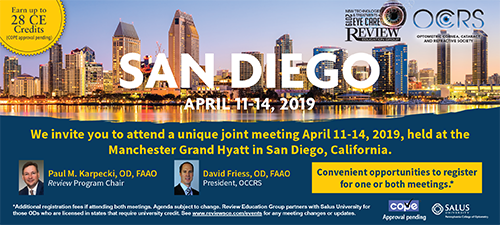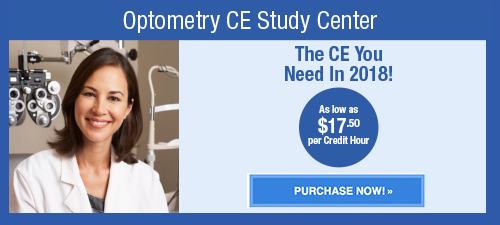
A
weekly e-journal by Art Epstein, OD, FAAO
Off the Cuff: Is New Zealand Optometric Paradise?
For the past 25 years, I have had the good fortune of traveling all over the world, almost all the time doing eye care related things. As I write this, Shannon and I are sitting in a hotel room in Wellington, New Zealand. Our trip started last week in Rotorua, with several days of speaking at the superb Cornea and Contact Lens Society of New Zealand Conference. The visit will end next week on Monday in Auckland, after a final lecture at the university. Licensure both here and in nearby Australia is also countrywide, which facilitates not only licensure portability, but also uniform practice standards. Optometric training does vary somewhat, but most New Zealand optometrists complete a six-year bachelor's degree in optometry. While there is a move toward a doctorial level degree, from what I understand, Kiwi optoms are already permitted to use the term “doctor.” I found our colleagues here knowledgeable, capable and very engaged. One of the more remarkable things about the country is the New Zealand Accident Compensation Corporation, a government agency that provides no-fault compensation for victims of a variety of accidents and injuries including medical misadventures and malpractice. Imagine that happening in the US with our legal and legislative lobbies? Shannon and I love New Zealand, its beauty and wonderful people, and we hope to visit again. But as with all trips abroad, we’re reminded that there is no place like home and how lucky we are to be Americans.
|
|||||
 |
||
| Effect of Systemic Antihypertensives on Change in IOP After Initiating Topical Prostaglandins for Primary Open-Angle Glaucoma | ||||
There is a limited understanding of factors that influence the efficacy of topical glaucoma medication. This study is a long-term, case-control analysis of how systemic antihypertensive (anti-HTN) medications influence the change in IOP after initiating prostaglandin (PG) drop therapy. A retrospective chart review of 3,781 patients was performed on patients with a diagnosis of glaucoma suspect that progressed to primary open-angle glaucoma (POAG) by ICD-9 codes over a 10-year period. Inclusion criteria consisted of the following: 1) progression from pre-glaucoma to glaucoma diagnosis in a time span of ≥6 months; 2) two visual fields recorded between these dates; 3) initial average IOP of both eyes of ≥21 mmHg; and 4) initiation of topical PG therapy alone. IOP (in mmHg) was measured at initiation of PG drops and at next visit.
A total of 111 patients were qualified for analysis. Patients not on anti-HTN agents had an average IOP decrease of 6.38mm Hg ± 0.56mm Hg. Comparatively, patients on anti-HTN agents had an average IOP decrease of 6.66mm Hg ± 0.48mmHg). In addition, there was no statistical difference between IOP decrease between patients on single vs. multiple systemic anti-HTN agents. There were eight non-responders to PGs on no anti-HTN medications and 12 non-responders on anti-HTN medication. Researchers found that systemic anti-HTN medication use did not significantly impact IOP reduction after topical PG initiation for POAG. Additionally, they wrote, nonresponse to PG therapy was not correlated to systemic anti-HTN use.s. |
||||
SOURCE: Siddiqui M, Iltis J, Yanev P, et al. Effect of systemic antihypertensives on change in intraocular pressure after initiating topical prostaglandins for primary open-angle glaucoma. Clin Ophthalmol. 2019;13:207-13. |
||||
 |
||
| Intraocular Oxygen and Antioxidant Status: New Insights on the Effect of Vitrectomy and Glaucoma Pathogenesis | ||||
This study investigated correlations of oxygen (pO2) in the ocular anterior segment of human eyes, and aqueous humor antioxidant levels of ascorbate (AsA) and total reactive antioxidant potential (TRAP) with glaucoma and vitreous status. This prospective, cross-sectional study stratified patients (n=288 eyes) by lens and vitreous status, and presence of primary open-angle glaucoma for statistical analyses. Intraocular pO2 measurements with a fiberoptic probe were made in patients at the beginning of planned glaucoma and/or cataract surgery. Aqueous humor specimens were obtained for antioxidant analysis (AsA, TRAP).
Following prior pars plana vitrectomy, pO2 was significantly higher compared to the reference group (cataract; CAT) in the anterior chamber (AC) angle (16.2mm Hg ± 5 vs. 13.0 ± 3.9mm Hg) and in the posterior chamber (7.6mm Hg ± 3.1 vs. 3.9mm Hg ± 2.7 mmHg). AsA and TRAP levels were significantly lower (1.1 ± 0.4 vs. 1.4 ± 0.5 mM; 403.3 ±116.5 vs. 479.0 ± 146.7 Trolox unit) in patients following vitrectomy surgery. In patients with an intact vitreous, neither pO2 nor antioxidant status correlated with lens status or glaucoma. Investigators wrote that increased pO2 and antioxidant depletion following vitrectomy suggested alteration of the intraocular oxidant-antioxidant balance. They added that the study linked physiologic factors, increased pO2 in the AC angle and posterior chamber, to decreased antioxidant levels in aqueous humor following vitrectomy surgery. Investigators concluded that oxidative stress/damage to the trabecular meshwork in such post-vitrectomy cases might contribute to intraocular pressure elevation and increased risk of glaucoma. |
||||
SOURCE: Siegfried CJ, Shui YB. Intraocular oxygen and antioxidant status: new insights on the effect of vitrectomy and glaucoma pathogenesis. Am J Ophthalmol. 2019; Feb 14. [Epub ahead of print]. |
||||
 |
||
| Iatrogenic Retinal Central Artery Occlusion After A Cerebral Digital Subtraction Angiography | ||||
Digital subtraction angiography (DSA) is a technique used in interventional radiology for the diagnosis of vascular cerebral conditions. Central retinal artery occlusion (CRAO) is a complication of endovascular procedures that involve atherosclerotic plaque removal with subsequent embolization. This case presented a patient who noticed a sudden vision loss during a DSA. Funduscopy showed retinal pallor and a cherry red spot. The angiography showed a structure suggesting the presence of an embolus in the central retinal artery. The patient was diagnosed with a CRAO, and unsuccessfully treated with ocular massage, topical hypotensive drugs, oral acetazolamide and anterior chamber paracentesis, with a final visual acuity of 0.05. Central retinal artery occlusion is a rare complication of DSA. Due to its poor prognosis, it must be considered when performing neuroradiological procedures. |
||||
SOURCE: Mata-Moret L, Chiarri-Toumit C, Hernández-Bel L, et al. Iatrogenic retinal central artery occlusion after a cerebral digital subtraction angiography. Arch Soc Esp Oftalmol. 2019; Feb 12. [Epub ahead of print]. |
||||
| News & Notes | ||||||||||||||||||||||
| American Academy of Ophthalmology & American Academy of Optometry Join with CDC to Promote Safe Contact Lens Wear The American Academy of Ophthalmology and the American Academy of Optometry are joining the Centers for Disease Control and Prevention to offer spring break safety tips so travelers spend their time on the beach, not the emergency room. The CDC is offering several resources to spread the word about contact lens safety this spring including sample social media graphics. And the American Academy of Ophthalmology has a one-minute animated video outlining eight steps to protect your sight from contact lens infection. Read more. |
||||||||||||||||||||||
| Prevent Blindness Board Elects Brocato to Board
The Prevent Blindness Board of Directors elected to the board James “Jim” A. Brocato, president and CEO of Coherent Eye Care. The vote was held on March 1 at the Prevent Blindness Spring Board Meeting in St. Petersburg, Fla. Coherent Eye Care is a management service organization that specializes in providing patient-centered population eye health services designed to help eliminate preventable vision loss. Prior to Coherent Eye Care, Brocato served in various management and senior leadership positions with Allergan, NovaMed, TLC Vision and the American Optometric Association. Read more. |
||||||||||||||||||||||
|
||||||||||||||||||||||
|
||||||||||||||||||||||
|
Optometric Physician™ (OP) newsletter is owned and published by Dr. Arthur Epstein. It is distributed by the Review Group, a Division of Jobson Medical Information LLC (JMI), 11 Campus Boulevard, Newtown Square, PA 19073. HOW TO ADVERTISE |





